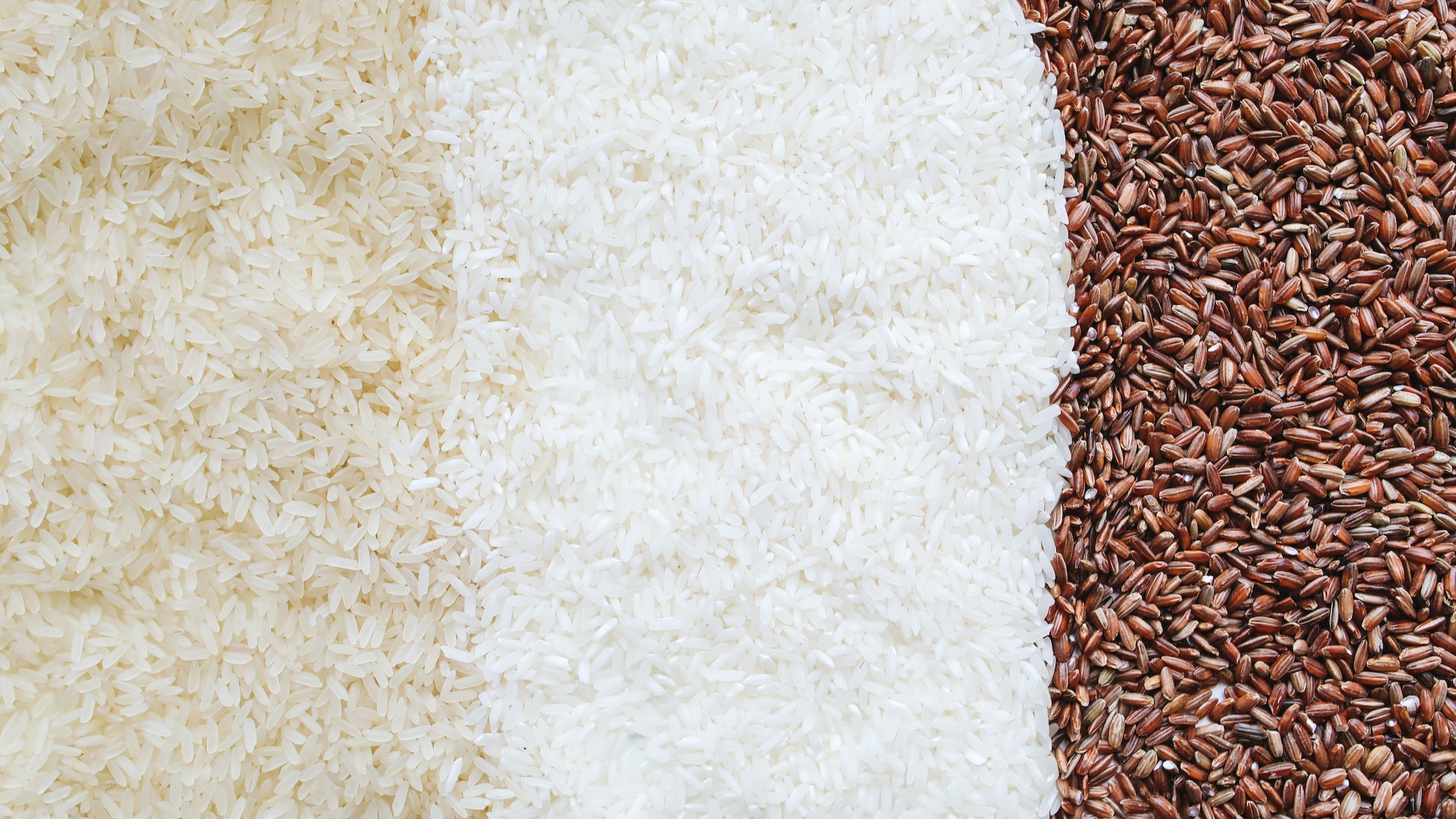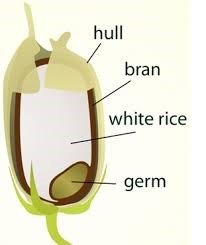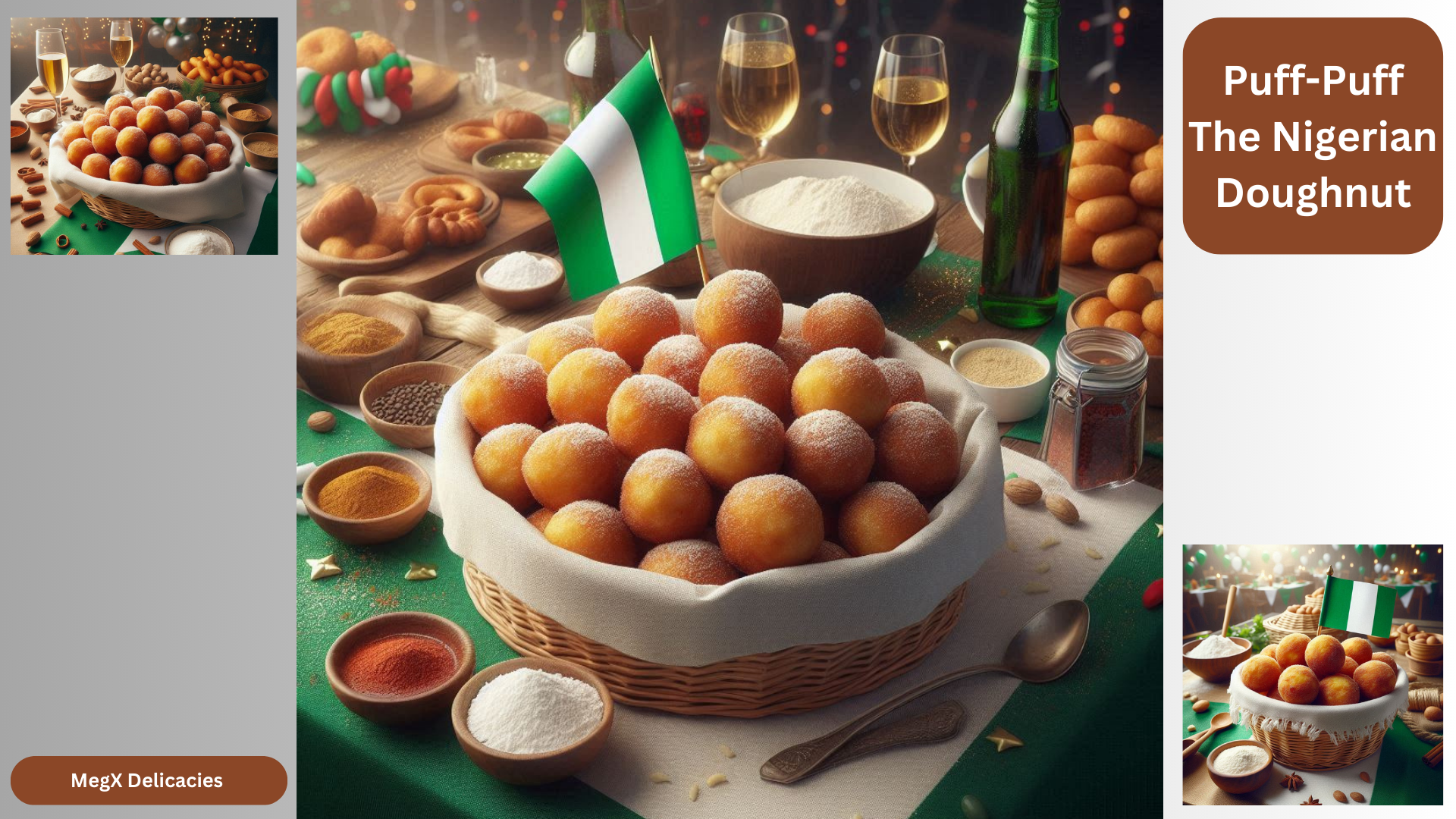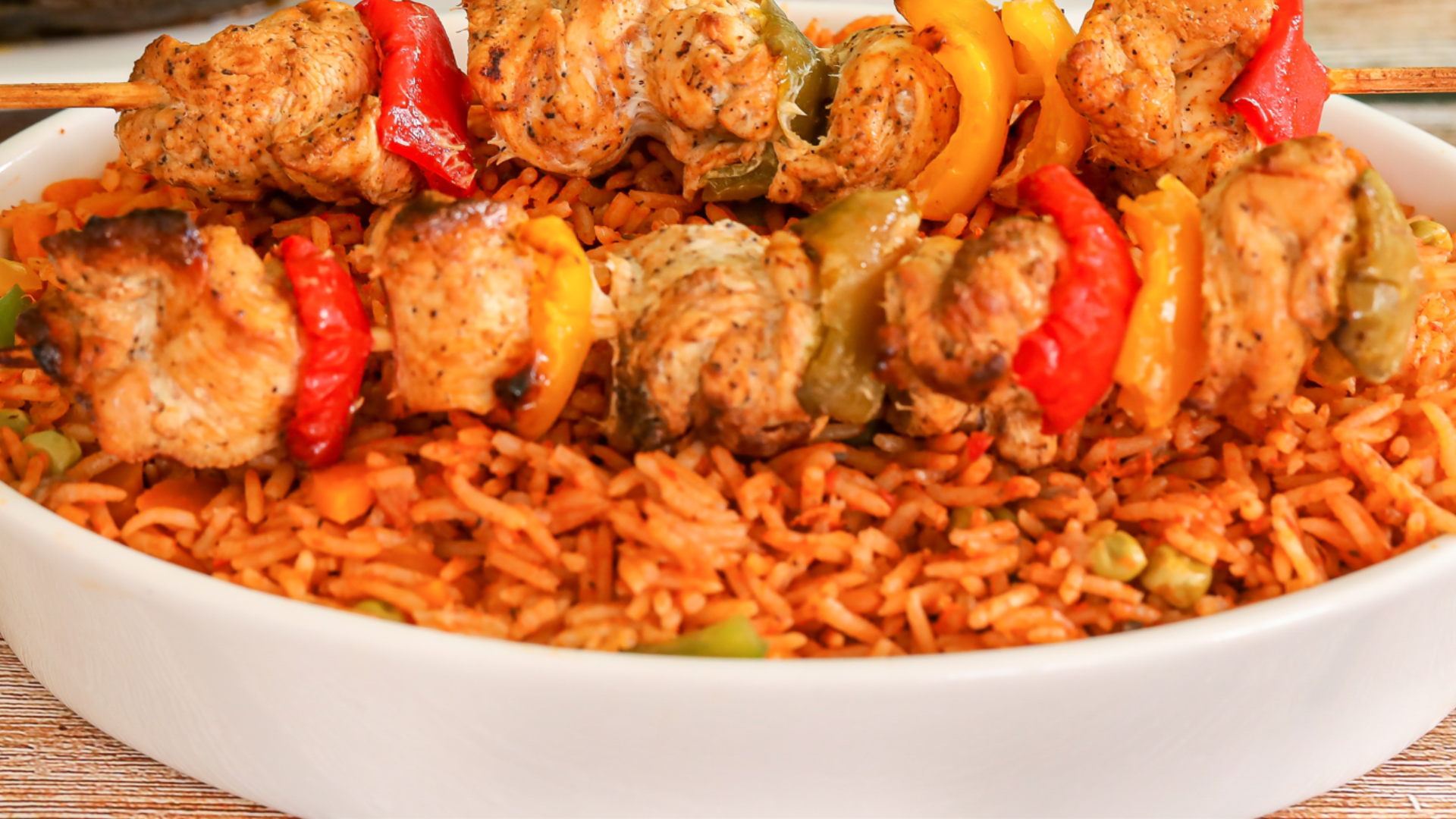
What type of Rice do we actually need to cook a great tasting and textured dish of Jollof and why?
There are actually over 40,000 varieties of cultivated Rice in existence!
It is believed that Rice was first grown for food in Asia (India, Chinese & Thailand) as long ago as 5000 years BC.
To understand how the type of Rice you use influences your Jollof Rice – Let us look a little closer at this delightful little wonder-grain.
The Anatomy of a Rice Grain
Each grain of rice consists of a number of layers:

The Husk/Hull, the two interlocking halves which house and protect the grain. – This is almost always removed during milling.
The Bran, This is made up of many super thin layer, infused with fibre, Vitamins (B-Complex, to be exact) & fats. – This is the healthiest and most nutritious part of the grain, which if left intact produces a Rice we know today as – Brown Rice!
The Rice Kernel, is the inner mass of the grain and consists mainly of starch – This is what is left over after the milling process to create – White Rice!
Finally, each grain has an Embryo or Germ – We all know what this part of the grain does – Yes, it is the reproductive part of the plant which if planted will grow into a new plant!
So out of the 40,000 different varieties or types of Rice, Which ones are the best for cooking up a world class Jollof Rice Dish? We know there are a variety of types of rice available, however, we are going to explore the 4 most popular type’s specific to cooking Jollof Rice.
In my opinion the Number 1 choice for African Jollof Rice is:
White Long Grain – This Rice is very refined, polished and is white in colour. The fact that the grains remain separated when it cooks makes it the best choice for most people. However, a nice sticky and Moorish Jollof Rice can also be attained using a different cooking style using this same Rice.
It is one of the easiest Rice to cook and a great choice to accompany spicy sauces or infuse with flavoursome herbs spices and seasonings. (This is the number 1 choice for African/Nigerian Jollof Rice!)
There are 205 calories in 1 cup of cooked White Long Grain Rice – 2% fat, 89% carbs and 9% protein. A good source of folates & manganese. This is followed closely by:
Easy Cook Par-Boiled Basmati Rice – This is another type that is a cross between long grain and Basmati (as far as I am concerned, anyway) – An example of this type of Rice is Asli Golden and it has a golden highly polished look. Lightly fragranced and fluffy. This is also popular with Africans, Caribbean’s & Middle Easterners
This is always my first choice when clients request for Basmati Jollof Rice, because it is easy and fast to cook and also absorbs the flavours of the sauce and spices very well. It always ends up looking and tasting Lush!
Basmati Rice – This Rice is normally very long, slender has a fragrant flavour and aroma. Basmati Rice can be White or Brown and is the Rice and is the preferred Rice used in Indian cuisine. Although the grains separate when cooked they are fluffier than ordinary white Rice.
(My preferred choice when catering for Asian/Indian events, and some Africans don’t mind either). A bit more difficult to cook as the grains are slender and more susceptible to over-cooking.
Note – Pure Basmati Rice only grows in ONE place on earth – The foothill of the Himalayas! (There are 191 calories in 1 cup of cooked Basmati Rice – 0.5 fat, 57.8% carbs and 6.1% protein)
The healthier option is the – Brown Long Grain Rice (Wholegrain Rice). This Rice has a nutty flavour and is nutritionally the most complete Rice available as it retains more vitamin, mineral and fibre content. Brown Rice takes longer to cook than white Rice and the cooked grains have a chewy texture.
Brown Rice is helpful in the prevention of colon cancer, breast cancer, and leukaemia. This beneficial effect can be attributed to the presence of potent antioxidants and high fibre content in it. The fibre content present in brown Rice has the ability to bind itself to harmful cancer-causing toxins in the body. This prevents the toxins from attaching to the walls of the colon and helps eliminate them from the body.
So, now that we understand the types of Rice available to cook Jollof Rice with, you can now choose according to how you would like you Rice to look and taste.
If you would like a dish that features fluffy Rice with separated grains, rich and full flavoured – Go for the long Grain Rice. Basmati Jollof is bit trickier to cook as it cooks faster and has a tendency to go soggy and clump together. However, if you know how to use Basmati, it ends up a pretty tasty dish.
It is important that you choose a type of rice you are familiar with, I chose and recommend Asli, it seems to be a cross between long grained and Basmati hence it is a bit more resistance and tolerant to cook.
Perhaps you favour a stodgier, saucy but firm textured Rice? This is more attuned to the Nigerian traditional way of cooking Jollof Rice in the ‘Agabri-Ojukwu’ (Clay-Pot) cooked with a well controlled wood fuelled fire to help infuse it with that smoky, almost burnt aromatic flavour that we all love – This is one that is a bit difficult to recreate as a controlled burn is necessary to create that rich smoky flavour. There is a thin line between a burnt flavoured dish and a smoky one! If you are unable to perfectly achieve this, just stick to a clean but tasty flavour.

If you would like to be a bit creative and choose the healthy option, the Brown Whole Grain Rice – you are looking at a more risotto-like textured dish (Jollof-Risotto) – While it is uncommon to have a Jollof Rice dish incorporating a broth and creamy consistency, the rustic coarseness of the Brown Rice with an addition of assorted meats/seafood, vegetables and an infusion of African flavours and spices will make this a winner at any dinner party!!
Any of these rice types can be used to cook Jollof rice providing you understand the right cooking techniques for each one.
Author
Recent post

7 September 2024

2 December 2023

19 March 2023

19 March 2023